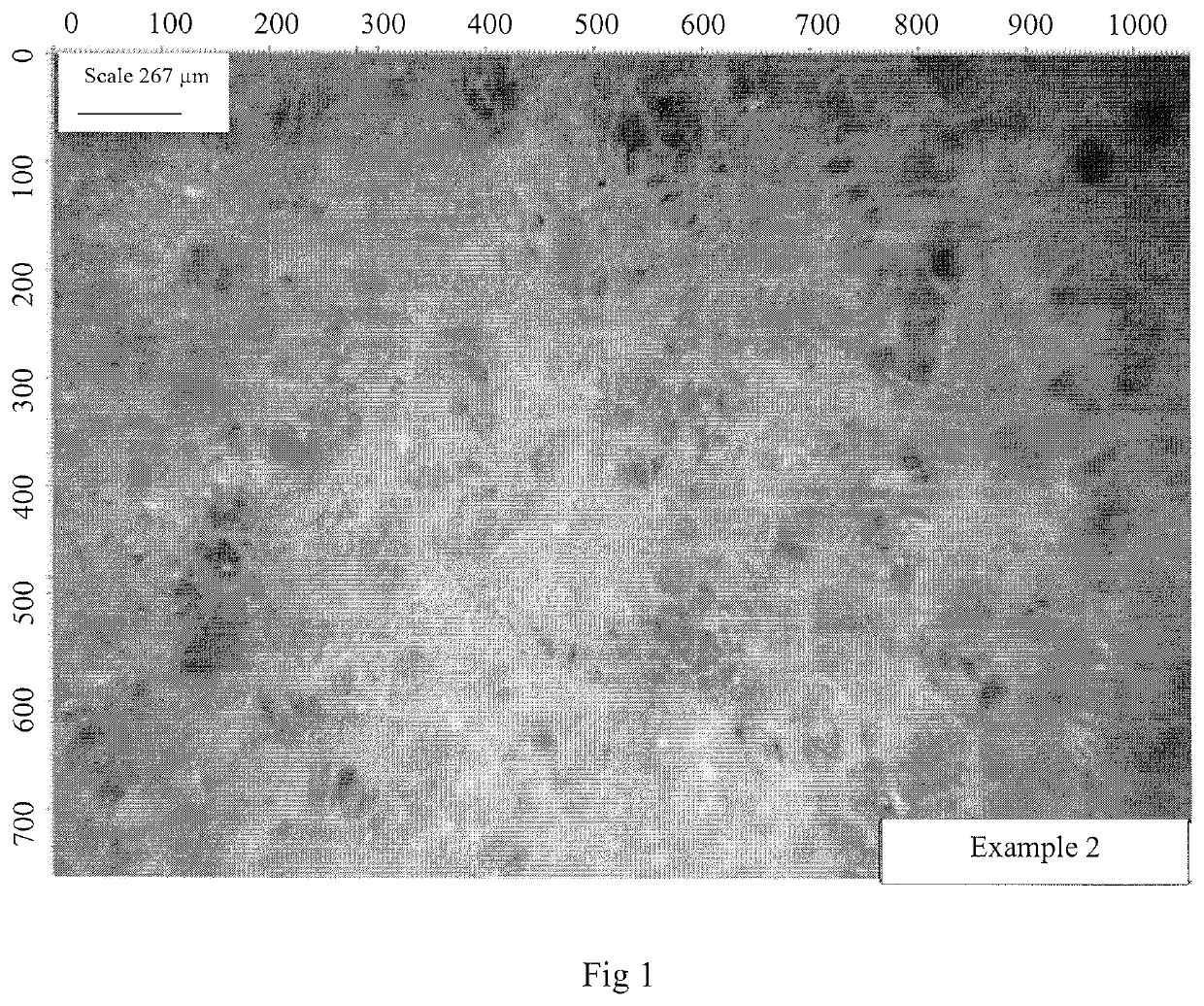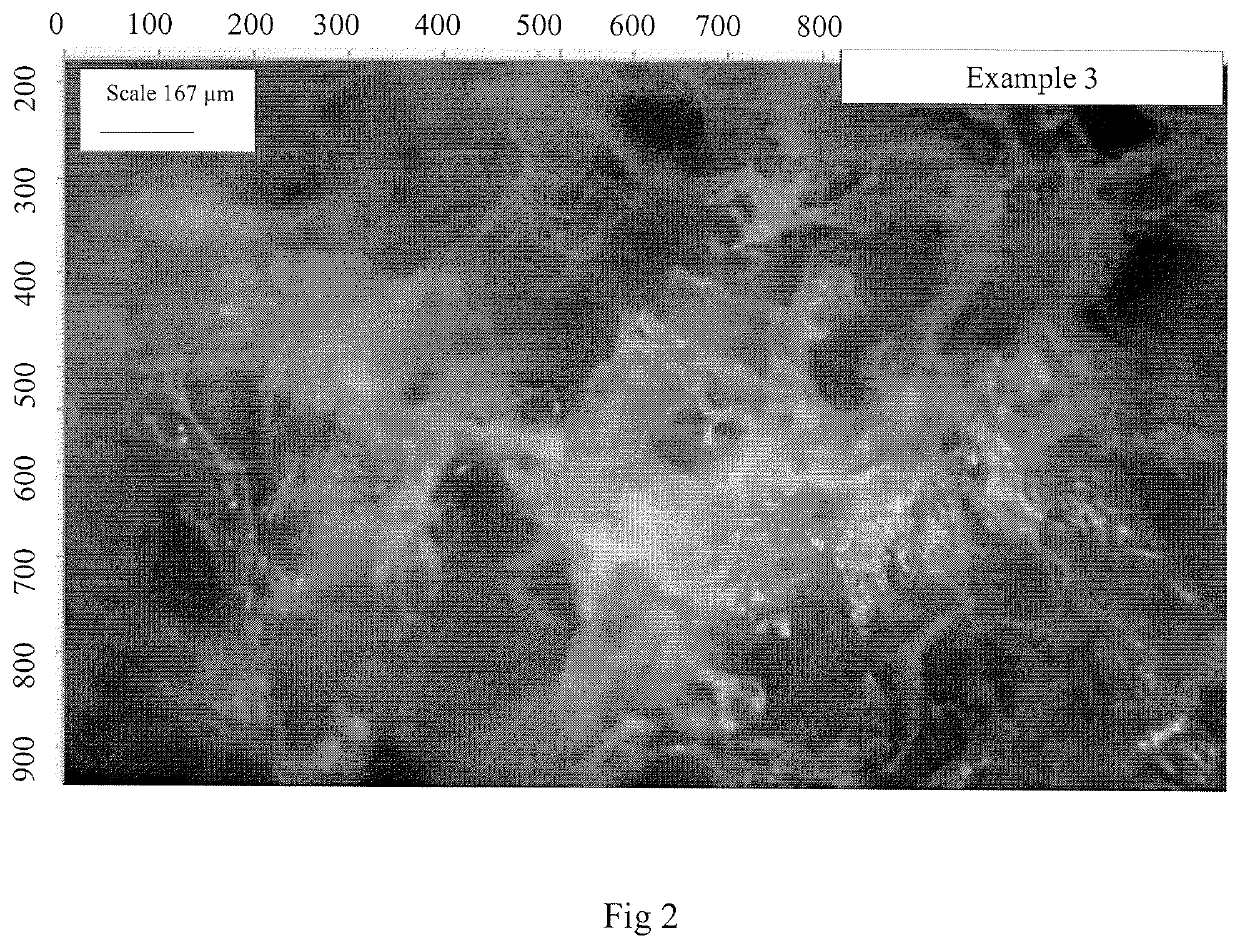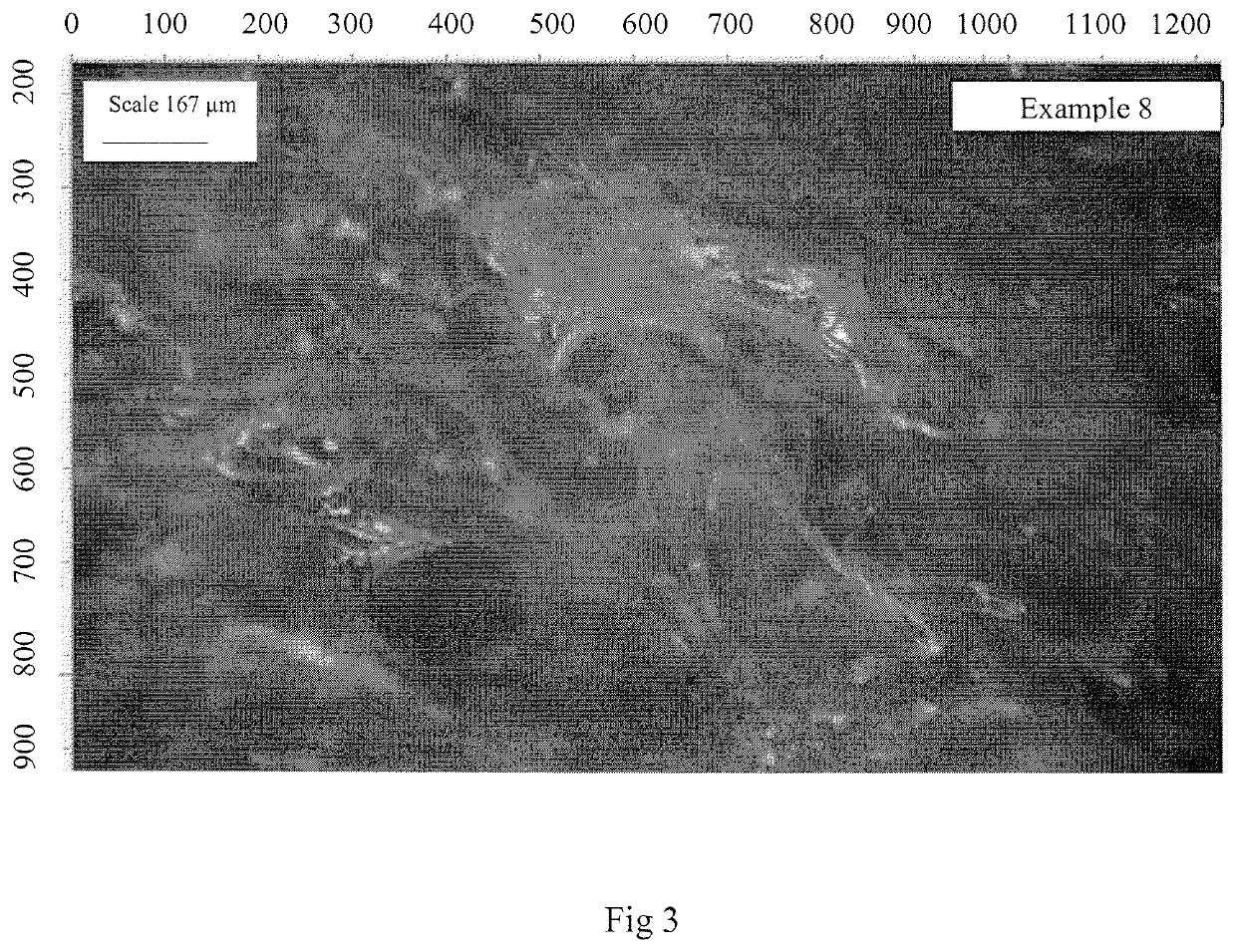Psyllium based moisture absorbent material
a technology of psyllium foam and moisture absorption, which is applied in the field of moisture absorption psyllium foam, can solve the problems of limited moisture absorption and retention of existing psyllium containing materials, and the tendency of conventional wound dressings to decompose, so as to facilitate cell growth and regeneration, increase the strength of the material, and increase the integrity of the material
- Summary
- Abstract
- Description
- Claims
- Application Information
AI Technical Summary
Benefits of technology
Problems solved by technology
Method used
Image
Examples
example 1
on of Psyllium Foam from a Filtered Psyllium Gel Solution
[0039]First, 7.5 g of psyllium husk (Frøskaller) corresponding to a 2.5% w / w concentration was mixed gradually using a Philips HR2074 blender. The powder was added gradually through the opening in the lid into already stirring RO water (292.5 g) contained in the blender glass jar. The mixture was stirred continuously at the minimum speed for 1 minute and then transferred into a plastic beaker for the glass jar to be cleaned and for the filter (˜100 μm sieve size) and jar lid to be installed for the filtration process. The mixture was then poured into the filter and the blender run at the maximum speed for 3 minutes. The filtered gel (referred to as filtrate 1) was very viscous and difficult to pour out of the jar with the lid on. The lid was therefore removed and with the measuring cup on the filter, the blender jar was tilted and the filtered gel scooped out of the jar into a cleaned vessel. The semi-solid gel residue left in...
example 2
on of Psyllium Foam from Filtered Psyllium Gel Solution Containing Hydrogen Peroxide and Tween 20
[0041]This example was investigated to assess the effect of addition of a surface active agent (Tween 20) and hydrogen peroxide (antimicrobial agent). Here 15 g (3% w / w) of psyllium husk were weighed and stirred briefly (1 minutes) into 485 g RO water using a Philips blender. The mixture was filtered as described in example 1 except that the final residue was further filtered by squeezing manually through a woven plain cloth and collecting the resulting gel extract to give a final filtrate weight of 510 g. The solid content of the filtrate (2% w / w) was determined as in example 1 but using 45 g solution. The remaining fraction 465 g was transferred into the blender jar and after an addition of 4.65 g (1% w / w) Tween 20 to increase air bubbles in the foam, the mixture was mixed for 2 minutes. This was followed by addition of 9.2 g (2% w / w) hydrogen peroxide (H2O2) and further mixing until t...
example 3
on of Psyllium Foam from Unfiltered Psyllium Gel Solution Containing Hydrogen Peroxide and Tween 20
[0042]Psyllium solution in water contains various fractions some of which are insoluble particulates (10-15%). This example was investigated to assess the effects, if any, of these insoluble psyllium particulates on the texture and absorbency of foam produced. The foam was prepared by first mixing 10 g (2% w / w) psyllium in 475 g of RO water for 1 minute using a blender. This was followed by the addition of 5 g (1% w / w) Tween 20 and mixing for 1 minute before adding 10 g (2% w / w) H2O2 and mixing (for about 3 minutes) until the foam could be removed from the blender jar completely by tilting it. The foam was shared into glass dishes (60-100 g) as outlined in previous examples, stored in the fridge for about 1 hour before removing into a freezer and storing overnight. Freeze drying was carried out as outlined in example 1. The foam produced was white, soft, flexible, compressible, easily ...
PUM
| Property | Measurement | Unit |
|---|---|---|
| pore size | aaaaa | aaaaa |
| porosity | aaaaa | aaaaa |
| pore size | aaaaa | aaaaa |
Abstract
Description
Claims
Application Information
 Login to View More
Login to View More - R&D
- Intellectual Property
- Life Sciences
- Materials
- Tech Scout
- Unparalleled Data Quality
- Higher Quality Content
- 60% Fewer Hallucinations
Browse by: Latest US Patents, China's latest patents, Technical Efficacy Thesaurus, Application Domain, Technology Topic, Popular Technical Reports.
© 2025 PatSnap. All rights reserved.Legal|Privacy policy|Modern Slavery Act Transparency Statement|Sitemap|About US| Contact US: help@patsnap.com



